The Lost Vikings and how we learned to love multiplayer puzzles
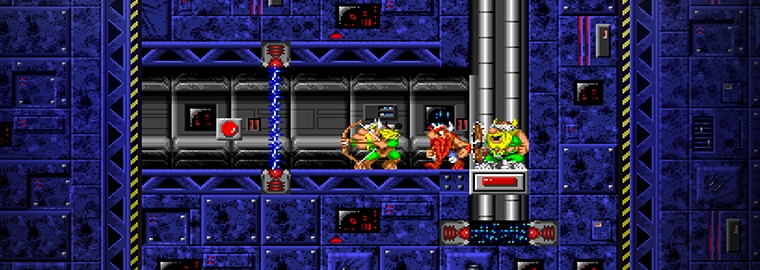
You’ve been working on this level for a few hours now. The plan is simple: get Olaf to jump down on the elevator shaft to join Baleog. Baleog clicks the button behind him. That button opens a door above for Erik. You’ll then swap to Erik and charge forward, destroying the wall in front of him, just past the gate that Baleog just opened. Then access the lever with Erik, which triggers the elevator that Baleog and Olaf are standing on, sending it up. All three Vikings reunite at the top, head to the exit, and you win. Simple, right?
When first released back in 1992 for the Super NES, The Lost Vikings turned heads due to its unique combination of challenging platforming gameplay, clever puzzles, and humorous writing.
Captured by the evil Tomator to become attractions in an intergalactic zoo, Erik the Swift, Baleog the Fierce, and Olaf the Stout must go through 37 levels spread across six different worlds to make it back home.
Whether you decide to take it on solo or in co-op mode, the goal of the The Lost Vikings is relatively simple—reach the exit of each stage while keeping all three playable Vikings alive. The Vikings each possess unique abilities, and the stages are built so that you can’t cross them without using your Vikings to support each other. The playable characters are:
Erik the Swift: Erik is a slender, red-headed powerhouse. He is the only one of the Vikings that can jump, and he can use his horned helm to charge at great speeds, damaging enemies or breaking through certain walls.
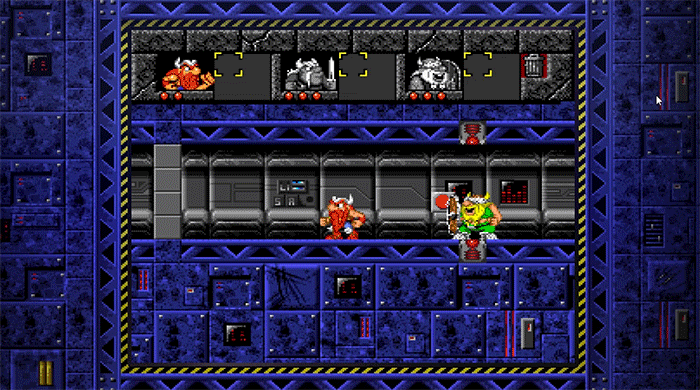
Baleog the Fierce: Baleog is a muscular blonde Viking with a mustache that would make Yosemite Sam proud. As a master of weapons, Baleog can dispatch enemies using either his bow or his massive claymore sword. He can also fire arrows to to press buttons or switches that would normally be out of reach.
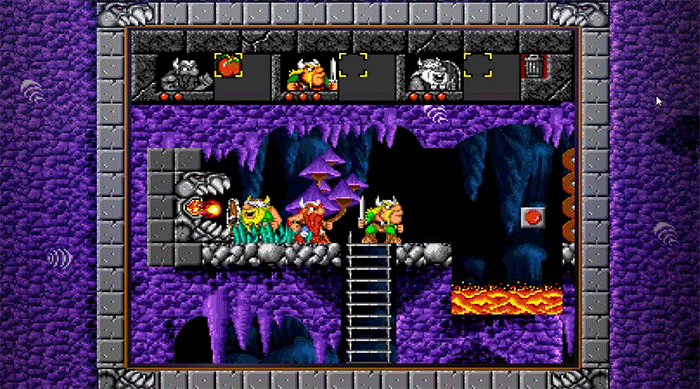
Olaf the Stout: The gentle giant of the bunch, Olaf is a blonde Viking sporting an impressive beard and clothes a bit too small for his personality. Olaf can block any attacks with his shield. He can also lift his shield overhead and hurl himself over cliffs to glide majestically. Last but not least, Baleog and Erik can climb on top of Olaf’s shield—he’s strong enough to keep them there, giving them a boost in height if needed.
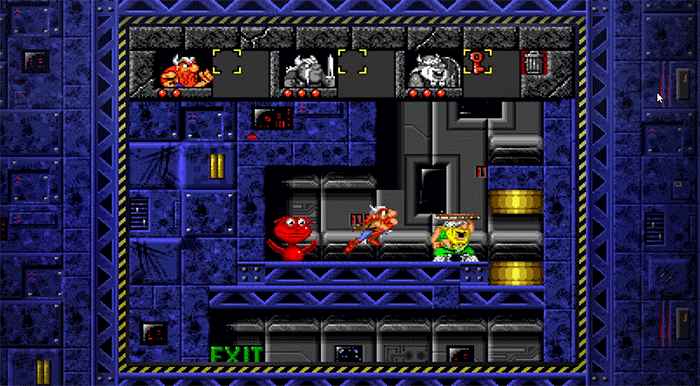
Don’t be a lemming
Back in the early days of Blizzard, creating games was just as challenging as today, but maybe for different reasons. Allen Adham (co-founder of Blizzard Entertainment, and producer/programmer for The Lost Vikings) says that “Today, [game development] teams can be 200-300 people or more. Back then you could make a full game start to finish in just a few months with four or five people. [When we started], we really had no idea what we were doing, we were fresh out of college, we just thought it would be fun to make games.”
Working for the small team at Silicon and Synapse—that’s what Blizzard Entertainment was called back in the day—was the first full-time gig for several employees of the then fledgling company, so learning on the job and being responsible for several parts of the development process wasn’t unheard of.
Hardware limitations on the consoles of the time also forced the team to be creative, making exciting games using limited memory, processing power and color palettes. Sam Didier (one of the artists for The Lost Vikings) mentions that color limitations were a big challenge. “I had to learn how to draw using only 15 colors, because that’s what was available. We ended up making more use of bold, vibrant colors, so they would stand out on a TV.”
The original concept for The Lost Vikings was inspired by Lemmings, a puzzle-platformer. The early designs called for hundreds of small—only eight pixels tall—Vikings with different skills and tools. Didier mentions among them “a torch-carrying Viking, a ladder Viking, and others, and you’d use them to scale castles, cross moats, defeat enemies, and so on”.
Patrick Wyatt (programmer for The Lost Vikings) muses that the team was essentially “building a game around this motif where you’re trying to conquer enemy towns, in a way sort of a 2D side-scrolling version of what Warcraft was”.
Evolving the concept: how many Vikings is too many?
As the game was being developed primarily for the console market, the team quickly realized that a game where the main characters are only eight pixels tall wasn’t going to work. Adham says that “Over time we realized that on a TV, little units didn't look very good. Console players also liked direct control over their character rather than indirect control.”
Didier also notes the challenges of the competitive console market of the time. How would Blizzard stand out on the console market with tiny little Vikings? “If we’re going up against these big characters, you know, Super Mario or Sonic the Hedgehog, we needed characters that could stack up to them, and hundreds of little Vikings couldn’t do it”, he says.
Frank Pearce (co-founder of Blizzard Entertainment and programmer for The Lost Vikings) recalls that “it eventually [the game] evolved to fewer Vikings, down to five, and then three, each with very specific abilities”. Wyatt notes that “The technical challenges were many, and we didn't have a robust design for it, the game morphed over time. One challenge was that once you solve the puzzle, you’d have to walk the Vikings to the end of the level which on a big level could be tedious, so originally we were going to have an auto-follow feature that would enable all characters to follow one of them. But in the end the levels were so dangerous that if you had one of the characters die due to being auto-following someone else, that would have been super annoying, and it ended up being a feature we just didn't have time for anyway.”
With the decision made to slim down the number of Vikings from a marauding army to a lovable trio, the level designers also took that into account, to ensure that most of the action happened on a relatively small space. Once the puzzle was solved, the player could easily bring all Vikings to the exit and move on to the next challenge quickly.
Learning to make games the Blizzard way
The Lost Vikings, perhaps inadvertently at times, ended up shaping how Blizzard approached game design for years to come, from art direction to gameplay and what the original creators call “finding the fun”. James Anhalt (programmer for The Lost Vikings) notes that “as they worked on it they just kept specializing the Vikings more and more until you’re down to just three, and that carried over to other Blizzard games where they kind of just concentrate the individual coolness in fewer units rather than having tons of characters that are just the same”.
Joeyray Hall (Artist for The Lost Vikings) explains how Blizzard’s notorious art style came to be, and how the process of getting their artwork approved for use ended up changing everything. “A lot of people ask me about why Blizzard's art style is so vibrant, why are colors so rich and all that. Sam (Didier) and I would work on it, and show it to Allen [Adham].
Because [Adham] was colorblind, he wasn't able to see the difference between some colors, so he'd go ‘Can you bring the colors up a little more so that I can see them?’ and we would do that, and he just kept saying that so we'd bring [the colors] up, show it to him, he'd approve it, then we would crank it back down for the game and move on. And then one day we just left [the colors] cranked up, and that's all there is to it, it wasn't magic or anything like that, it's just Allen was colorblind and wouldn't be able to see the colors otherwise.”
Adham, on the other hand, shared a curious story about design principles that came to define Blizzard’s approach for years to come. “We had just come out with the game, and we heard that [a store] nearby had a kiosk showing it. So I go there over lunch and I saw four kiosks showing games and The Lost Vikings was one of them. I got there just in time to see this boy, maybe 13 or 14 years old, on the very first level. One of the first things you have to do is to move Erik a bit to the right and jump over this pit of electricity. We were just trying to teach players how to jump with Erik. So he took two steps to the right, fell into the electricity, put the controller down, and moved on to the next game.
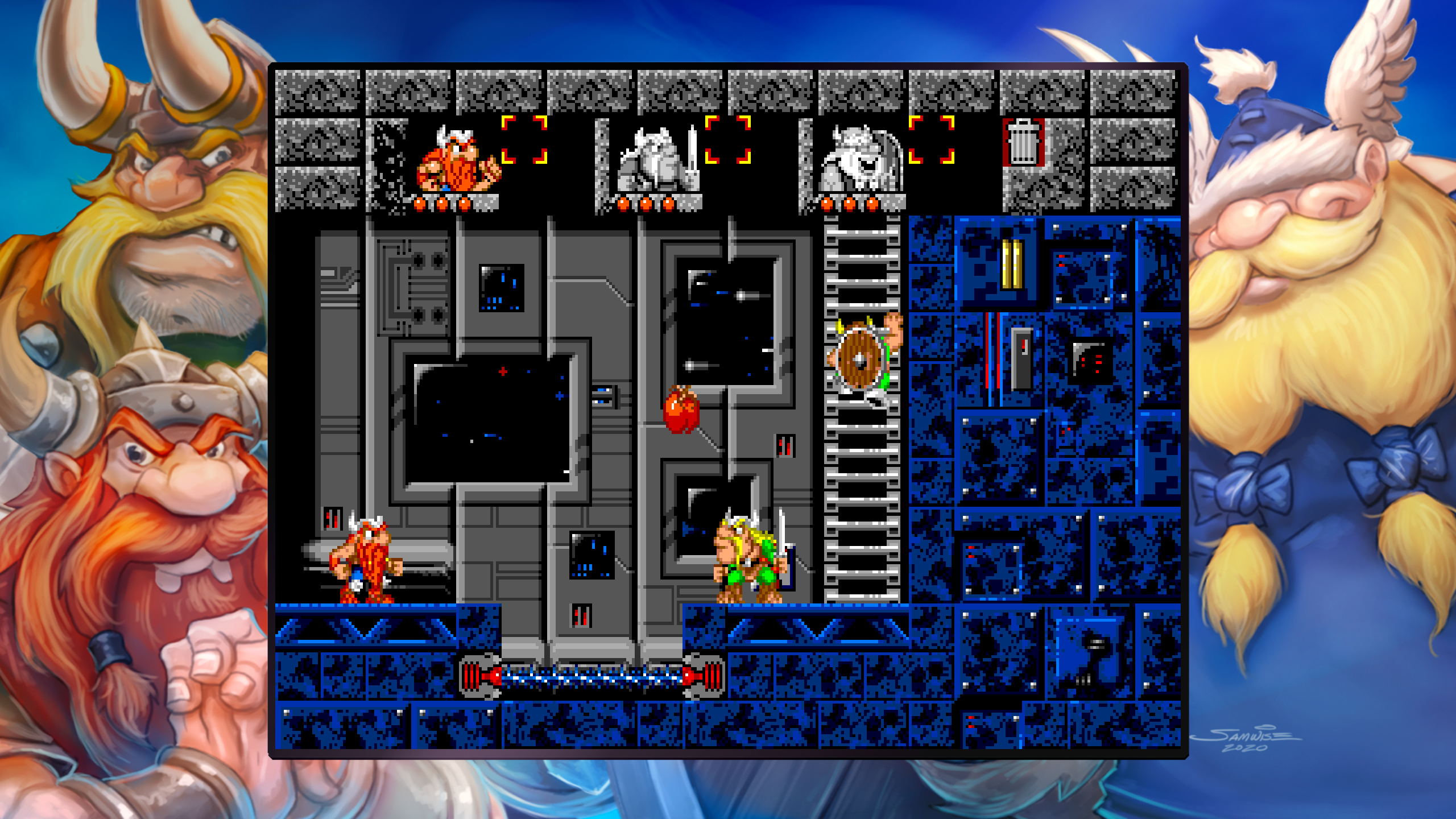
And I just thought 'oh my God, we killed this kid two seconds into the game and he's never going to know what an amazing game this is’. That moment formed the basis of the philosophy that we use in everything we do now, which is to make the onboarding of new players to the games as safe and easy as possible. You want your players right from the start to feel heroic, and powerful. I hope that boy went back eventually and gave the game another shot, but that lesson for me stands out as a watershed moment in Blizzard's design philosophy.
Lasting appeal
Though it went through numerous changes during its development, the goal for The Lost Vikings has remained consistent: to create a fun, engaging game that would stand out in the competitive console market of the early 90s, and continue to delight for a long time. To Didier, the main appeal of the game was in “the three different characters, not only they’re cool Viking characters doing what you expect Vikings to do, but we took them through time, so you play these Vikings in pre-historic times, in futuristic spaceships, in crazy situations. We had a lot of fun with it, we got to explore all these different eras and we our three familiar Vikings guide us through it.”
After the game was released, it wouldn’t be long before the Vikings would once again show up in Blizzard games. Rock n’ Roll Racing, released just one later, featured Olaf the Stout as a secret playable racer. All three Vikings appear in the Sega 32X version of Blackthorne, seemingly just as lost as the unsuspecting players who found them.
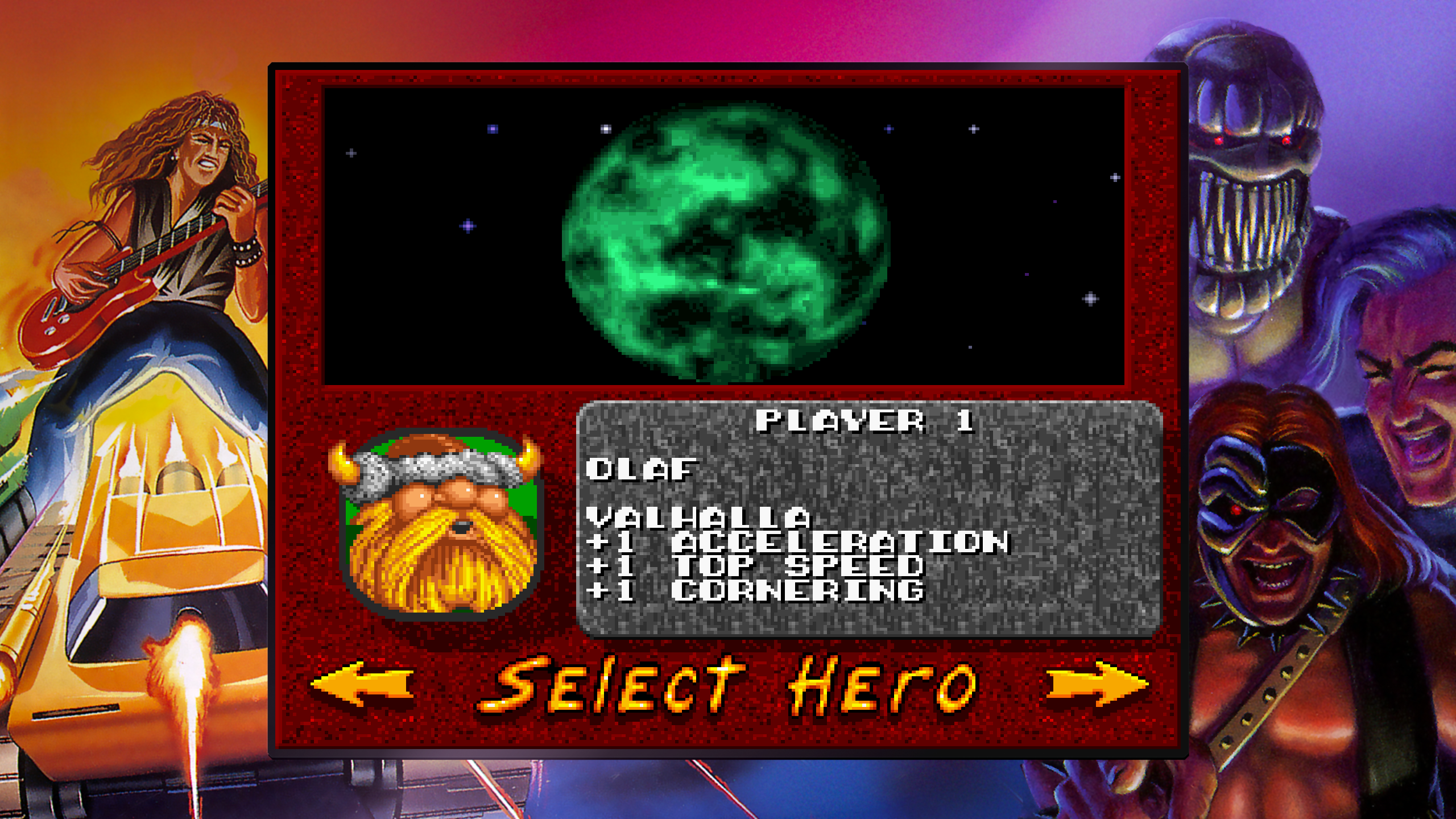
The Vikings would eventually find themselves on Azeroth, more specifically in World of Warcraft, lost inside the Uldaman dungeon in the Blasted Lands. Later, when the the Cataclysm expansion was released, the Vikings were more prominently featured in quests around the Blasted Lands zone, where each of them got to use their signature ability to help the heroes of Azeroth. And most recently, they've shown up as (or rather, three, but sort of counting as one) playable characters in Heroes of the Storm
Wherever you met Erik, Baleog and Olaf first, we hope they’ve made a lasting and positive impression on you. And now that you know their story, the Blizzard Arcade Collection once more offers you the chance to help them complete their quest.
Ready to help bring these Vikings back home? It’s easy to get started. Head over to our overview article to see what’s coming. Celebrate 30 years of Blizzard with us enjoying one of our earliest titles—and look forward to another 30 years of epic entertainment!
As Baleog, you click the button. You swap characters to jump down with Olaf, his majestic shield above his head. As the overweight Viking slowly glides down towards safety, you swap to the red-haired Erik and charge the wall in front of you, past the door. But wait! To your horror, you hear the unmistakable sounds of Olaf getting hurt. You forgot to put his shield down after he landed, so he could block oncoming attackers. You swap back to Baleog in a panic, attempting to salvage the situation and use his mighty sword to defend Olaf. You are a second too late, as Olaf crumples into a pile of bones, his lifeless skull almost mocking you. Poor Olaf is down for the count. All that’s left to do is to begrudgingly restart the level, and remember to make him put his darn shield down next time… you almost had it.
For more information on Blizzard Arcade Collection, including more retrospective articles, interviews, and purchase links, check out our event blog.